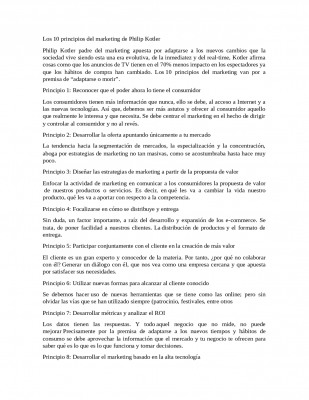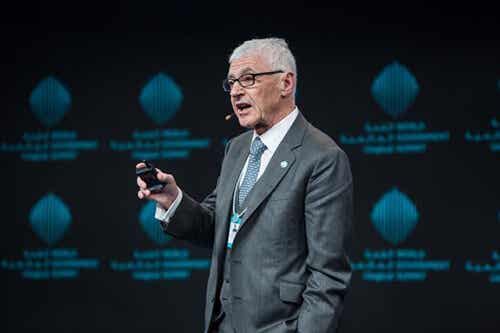Transformational leadership knows how to inspire the group. He relies on a figure who delegates responsibilities so that others have the courage to take risks to bring more innovation to the company.

Written and verified by the psychologist GetPersonalGrowth.
Last update: 24 March, 2022
Today, more than ever, we need transformational leadership. In times of change, in times of crisis and in very complex contexts, the figures capable of inspiring others and accompanying them towards change are more crucial than ever.
The concept of transformational leadership first appeared in the mid-80th century. It was James V. Downton, a renowned sociologist, who coined this term, but the concept did not begin to gain real interest until the late XNUMXs, when Bernard M. Bass, a scholar of industrial and organizational psychology, delved into this area by refuting it with important scientific data.
Today it makes more sense to apply this approach to leadership. Transformational leadership consists of no more and no less in fto develop a business culture in which work groups are increasingly autonomous, responsible and motivated to overcome difficulties with innovative decisions, ready to take risks to achieve success.
What is transformational leadership?
Democratic, autocratic, transactional and transformational leadership. There are many ways to drive and not all of them are valid or effective. In reality, each organization promotes a different management structure and, as we all know, does not always favor a good working environment or better production or innovation to position itself on the market.
Unfortunately, the classic authoritarian and vertical management continues to prevail manifesting itself with a large gap between the boss and the employees. In these scenarios, in reality, there is no leader. There is a figure who uses his authority to impose ideas, to direct employees in the purest traditional style.
Big companies know that this model no longer works and that, more than bosses, they need good leaders, people capable of inspiring and transforming. In light of this, we have already seen some changes in recent years, including the introduction of transactional leadership.
Even the model in which the employee is limited to motivating the employee through financial incentives is not good. All efforts are financially rewarded, in this way productivity obviously improves. But is it the most desirable model?
For experts like Bernard M. Bass the answer is no. Leadership must be transformational because this, and not another, is the best way to make a company excel over others.
A transformational leader is someone who ...
According to Dr. Bass, this is a person with the following leadership skills:
- He is able to motivate and instill a positive spirit in the work environment.
- It is the clear example of the values that the organization itself exemplifies: dynamic, with clear moral, ethical, creative principles, skilled in emotional intelligence and good communication.
- It fosters a work environment where priorities are clear.
- He trusts the skills and potential of his team.
- It encourages him to think of the company as something that is part of them.
- It emphasizes authenticity, cooperation, respect and open communication.
- It offers training and tutoring.
- Create harmony in the group.
- Help people make decisions for themselves.
- It encourages them to take responsibility for their duties.
- It makes work easy and motivating by creating an atmosphere in which it is exciting to be able to contribute your ideas to foster innovation.
How to develop transformational leadership?
According to Bernard Bass, transformational leadership is characterized by 4 elements, which are often referred to as “the four I's”. Let's analyze them.
Idealized influence (II)
The leader is the role model and the best example to follow throughout the organization. He not only sets a good example, but he knows what he can achieve and that it has an impact on others. It is a man or woman who inspires because he believes in what he does and what he wants to achieve.
This leader hopes that his team will also develop the same qualities, so he is transformational because he encourages others to change, guides them, educates them.
Individualized Consideration (IC)
Transformational leadership is also compassionate leadership. He takes care of each person individually, creates a connection with every employee in an authentic way because what he wants is for it to happen.
The transformational leader is therefore a prepared and satisfied person, happy in that work scenario, he is a person of great value, human capital of great importance for the organization itself.
Inspiring motivation (IM)
Driving means, first of all, to motivate. It is making sure that each person is committed, faces challenges, overcomes himself and always knows how to give the best of himself. Transformational leadership manages to impact people in a simple but strong way.
The goal is to make everyone commit to the organization's goals so that they, in turn, feel free to come up with new ideas and make decisions on their own.
Intellectual stimulation (SI)
The transformational leader challenges his employees in order to stimulate their creativity, so that they go beyond the ordinary and reach the extraordinary. This is achieved only through trust, through the ability to attribute responsibility to them and also through a great intellectual stimulus.
Conclusions on transformational leadership
This approach is as interesting as it is revealing and should represent the corporate policy of each scenario and organization. A great example of a transformational leader is Nelson Mandela.
He used the principles of transformational leadership to abolish apartheid and promote change in South Africa. And he succeeded. Nelson Mandela is undoubtedly an excellent reference and a figure to be inspired by.

























